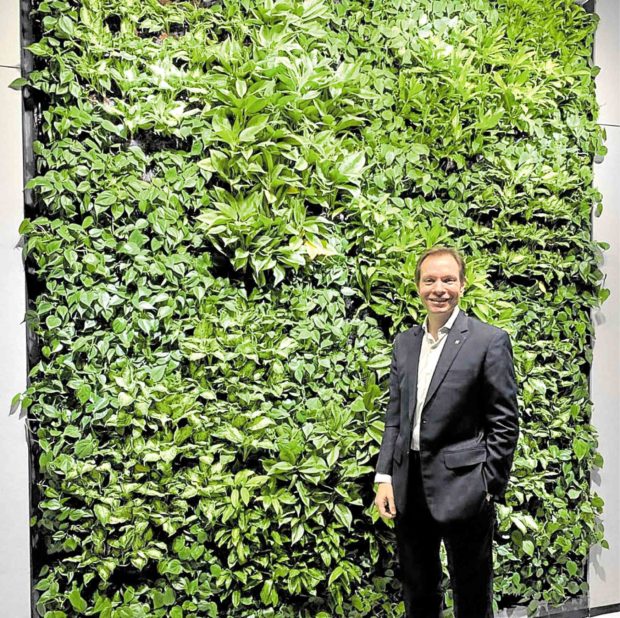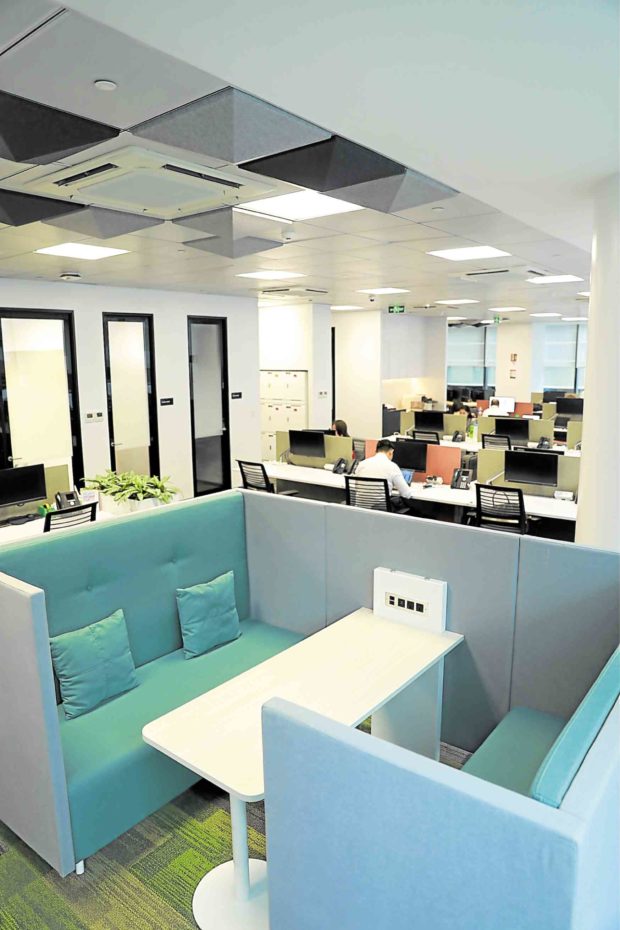Manulife proves an open-plan office is more than being on trend

Change starts in the home environment of Manulife in the Philippines, says country manager Richard Bates.
When one walks into Manulife’s new Philippine headquarters at NEX Tower, there are no permanent desks for employees. There are no closed offices for its senior management team.
Over a century since entering the Philippine market, Manulife has shifted to a “hot desk” or open office system to promote better collaboration among its people, in line with its bid to be the country’s leading digital customer-centric life insurer.
The new country manager, 46-year-old Richard Bates, sits behind a desk in full view of the staff. He freely mingles with other employees.
There are still designated rooms for meetings and conferences. When employees need to speak privately on the phone or need a private corner to compose their thoughts, they can go to the little rooms devoted as “quiet” spaces.
“I think as an organization, we are positioning ourselves as the leading digital customer-centric life insurance company, and in order to do that, it starts with your home environment … It starts with how they (employees and customers) work together,” Bates said in an interview during the inauguration of the new Philippine office in September.
Bates said being digital customer-centric requires three things: continuously upgrading the back-end systems, modernizing platforms for distribution and risk analysis and using digital channels for information dissemination.
Manulife Philippines has about 1,400 employees nationwide, including those from a sales team for the bancassurance partnership with China Bank. The average age of its employees is 34, higher than the national median age of 24 but nonetheless still millennial. It also has around 10,000 agents spread across 54 branches across the country.
Bates could attest to the positive results of the more open office system. “This environment has started bringing the team closely to each other. We are able to resolve problems quickly and more importantly, people are just happier,” he said.
“Usually if you look at open offices, there’s concern whether people will lose their space. But people actually like it,” he said, noting that this new system was driving up engagement and productivity.
A finance industry veteran, Bates has a strong background in advancing insurance penetration in emerging markets in Asia.
Prior to joining Manulife, he served as CEO of a multinational insurance firm in Cambodia. He was also responsible for the Asia operations of a private equity fund focused on investing and incubating insurance startups. He also previously led a multinational consulting firm’s deal strategy unit in Hong Kong and its financial services line of business across Asia.
Occupying six floors and the commercial space on the ground floor, Manulife is the anchor tenant at Nova Group’s 28-story NEX Tower, the newest office tower in Ayala Avenue.
Designed by architectural firm Skidmore, Owings & Merrill—the same firm that designed the world’s tallest building, Burj Khalifa in Dubai, and the One World Trade Center in New York—this building bagged the prestigious Urban Land Institute Asia Pacific Award for Excellence, besting over 50 projects across the region.
“Overall, the response has been very very positive. They (employees) like the energy of the free-flowing conversations and ideas that come across in a space that is physically laid out this way,” said Melissa Henson, senior vice president and chief marketing officer.
“It’s also designed in a way that we get a lot of natural light coming in. I think because we don’t have lots of walls and offices blocking the light, it’s very bright even on a gloomy day,” Henson said.
Going digital
Manulife’s physical transformation at its head office is seen reflective of its bid to contribute to the future-proofing of the insurance industry. It is now collaborating with the financial technology (fintech) companies to hatch nontraditional platforms and products and improve insurance penetration in the Philippines.
Manulife Philippines joined last year the 97-member Fintech Philippines Association, a nonprofit association representing and promoting the Philippines as a global leader in fintech innovation. Manulife now chairs the organization’s newly formed InsurTech committee.
“The interest for us really stems from the fact that one of our strategic pillars is to become a digital customer leader and for us to be able to do that, it is critical that we bring ourselves close to where the action is happening,” Henson said. “It’s both to learn about the new developments in technology and in the digital space but also to give us access to new solutions and new technologies that could potentially help us make our customer experience much better.”
Manulife hopes to contribute by leveraging its regional and global presence to provide access to “actionable” information, exploring joint industry research and studies and using technology to foster financial awareness and promote the importance of protection products.
With the launch of the InsurTech committee, Henson stressed the goal was not to get involved as an organization but to bring together fellow insurance providers and key stakeholders like regulators, customers and distribution channels.
The three objectives of the committee are to: improve insurance penetration in this part of the world; promote collaboration among industry players to explore nontraditional platforms, processes and products; and help embrace a culture of innovation among stakeholders.
“There is a lot of room to grow in the insurance industry. According to the Bangko Sentral ng Pilipinas’ Financial Inclusion Survey, only 18 percent of Filipino adults have insurance protection. Because of this, we want to develop and promote innovative solutions to enable more Filipinos to plan for their futures and live better lives,” Henson said.

